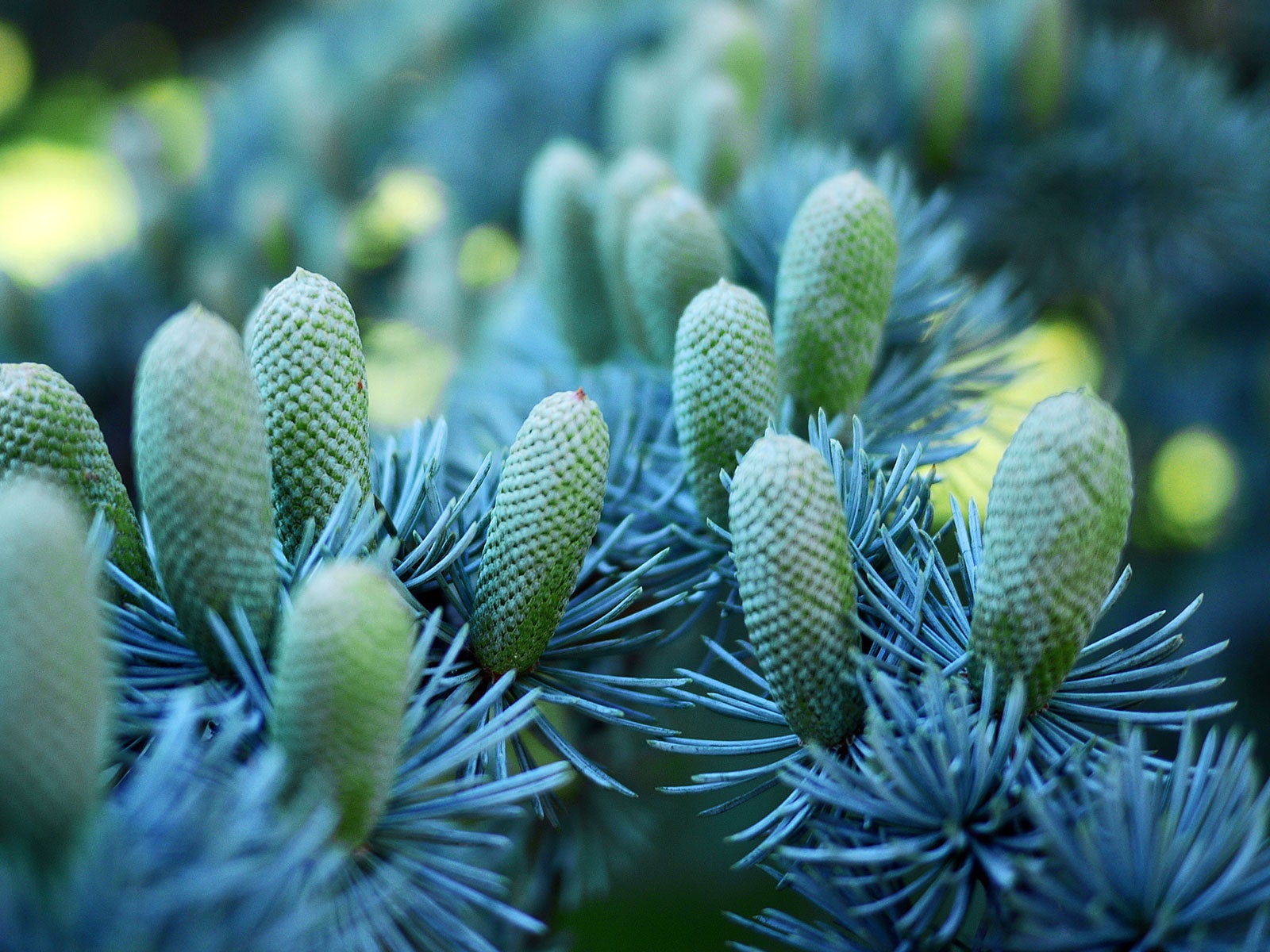Atlas Cedar Care: How To Grow Cedrus Atlantica


If you love cedar trees and have a large space for growing one, an atlas cedar tree (Cedrus atlantica) is a fine ornamental choice. One of the true cedar trees, it takes its common name from its home region, the Atlas Mountains in northern Africa. It is an evergreen conifer with a pyramidal shape when young, but it develops spreading branches and becomes more flat-topped as it matures.
Mature trees typically reach 60 feet (18m) or less, but sometimes grow taller. The one-inch (1.5 cm) curved needles on this conifer grow in clusters and are an eye-popping silver blue. These stay on the tree year-round and are a primary ornamental feature.
Quick Atlas Cedar Facts:
- Botanical name: Cedrus atlantica
- Height: 40-60 feet (12-18m) but occasionally to 120 feet (36.5m)
- Spread: 30-40 feet (9-12m)
- Sun exposure: Full sun or partial shade
- Soil requirements: Soil tolerant, accepting loam, clay or sand
- Hardiness zones: USDA 6-9
- When to plant: Spring or fall
Atlas Cedar Tree Care
Although growing cedar trees like these is not tricky, there are a few basic requirements. The atlas cedar growth rate is fairly slow, less than 12in (30cm) a year. However, the tree needs plenty of room to expand. Be careful when choosing a planting site for the atlas cedar, since it works best as a specimen tree, standing alone and allowed to grow to its mature height and width. However, once established, you should find that it doesn’t require much care.
Water & Light
Make sure atlas cedars get plenty of sun. It grows best in a site with full sun, although it will tolerate partial sunlight. These trees can handle moderate drought, but they prefer moist soil.
Soil & Fertilizer
While atlas cedar trees can cope with sandy and clay soils, they do best in deep, acidic loam soil with excellent drainage. Fortunately, you don't need to add fertilizer to keep these trees in good condition.
Problems, Pests & Diseases
Strong wind and heavy snowfall can damage or break the branches. The tree is also susceptible to several atlas cedar diseases, including Phytophthora, root rot, sooty mold and tip blight.
Planting an Atlas Cedar Tree
Planting is relatively straightforward – just remember that this tree needs a large space. The truck grows tall, the branches are long and spreading, and the taproot must sink deep to anchor the tree. Planting it in a location that's too small will cause headaches for the homeowner and problems for the tree.
Sign up for the Gardening Know How newsletter today and receive a free copy of our e-book "How to Grow Delicious Tomatoes".
You'll find transplanting cedar trees is not recommended, either, since it can result in the loss of the tree. Plant in spring or fall for the healthiest root development.
How to Propagate Atlas Cedar Trees
Atlas cedar is propagated by grafting trees or planting their seeds (although the latter option takes much longer). Female seed pods are oval cones up to 3 inches (7.5cm) long, while male cones are smaller. Shake the seeds from the right seed pods and plant in a flat tray filled with a sandy soil mix.
Atlas Cedar Varieties
You'll find there are several Atlas cedar wood varieties. ‘Clauca’ is an upright form of the tree, while the weeping form is the blue atlas cedar (Cedrus atlantica ‘Glauca Pendula’). The ‘Aurea’ cultivar has yellowish needles and is subject to needle sun scorch, while 'Argentea' has silvery-blue needles.
What is Atlas Cedar Wood Used For?
Atlas cedar wood produces an aromatic oil that is a natural and powerful insect deterrent. Atlas cedar wood is also often used for chests and drawers.

Teo Spengler is a master gardener and a docent at the San Francisco Botanical Garden, where she hosts public tours. She has studied horticulture and written about nature, trees, plants, and gardening for more than two decades, following a career as an attorney and legal writer. Her extended family includes some 30 houseplants and hundreds of outdoor plants, including 250 trees, which are her main passion. Spengler currently splits her life between San Francisco and the French Basque Country, though she was raised in Alaska, giving her experience of gardening in a range of climates.